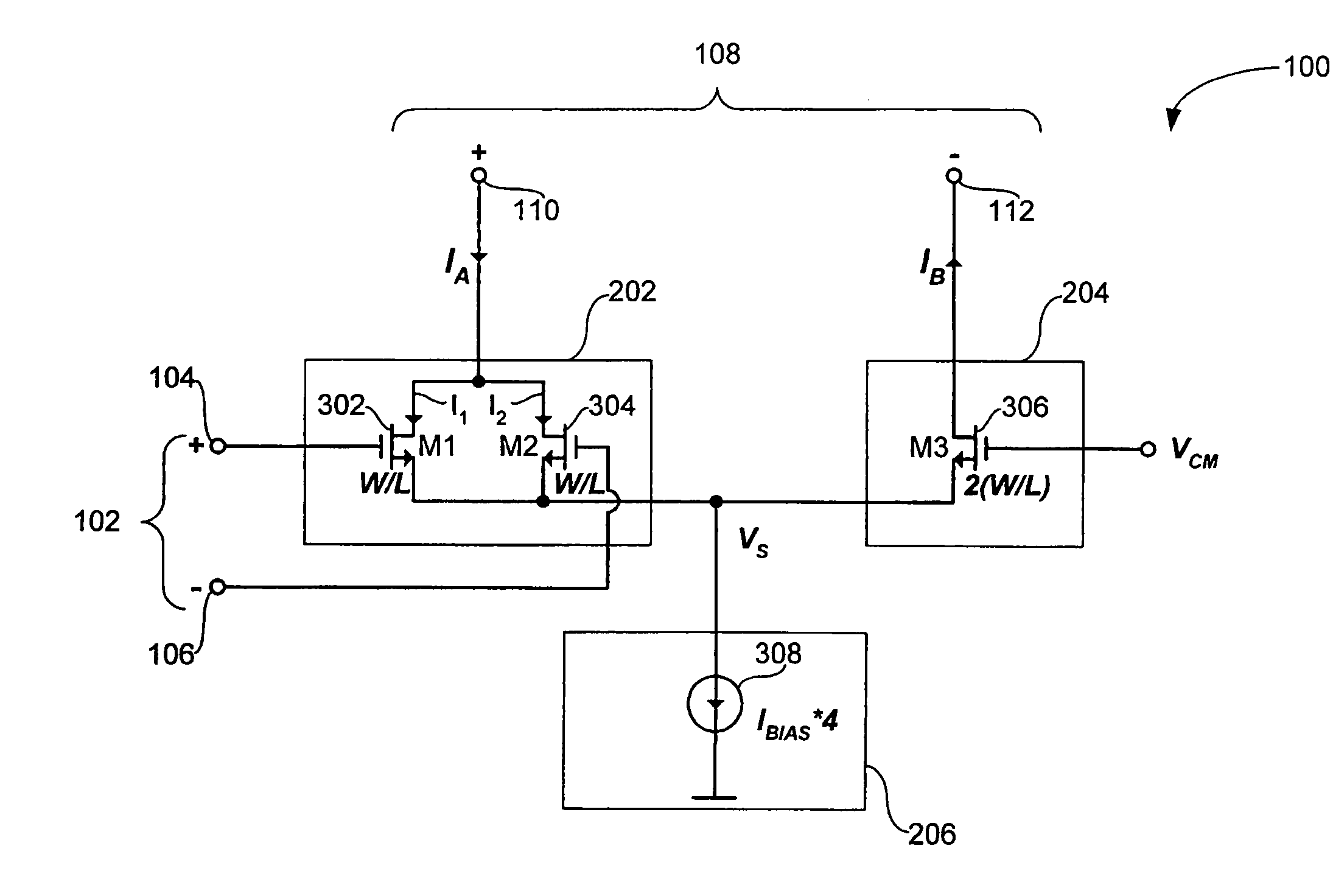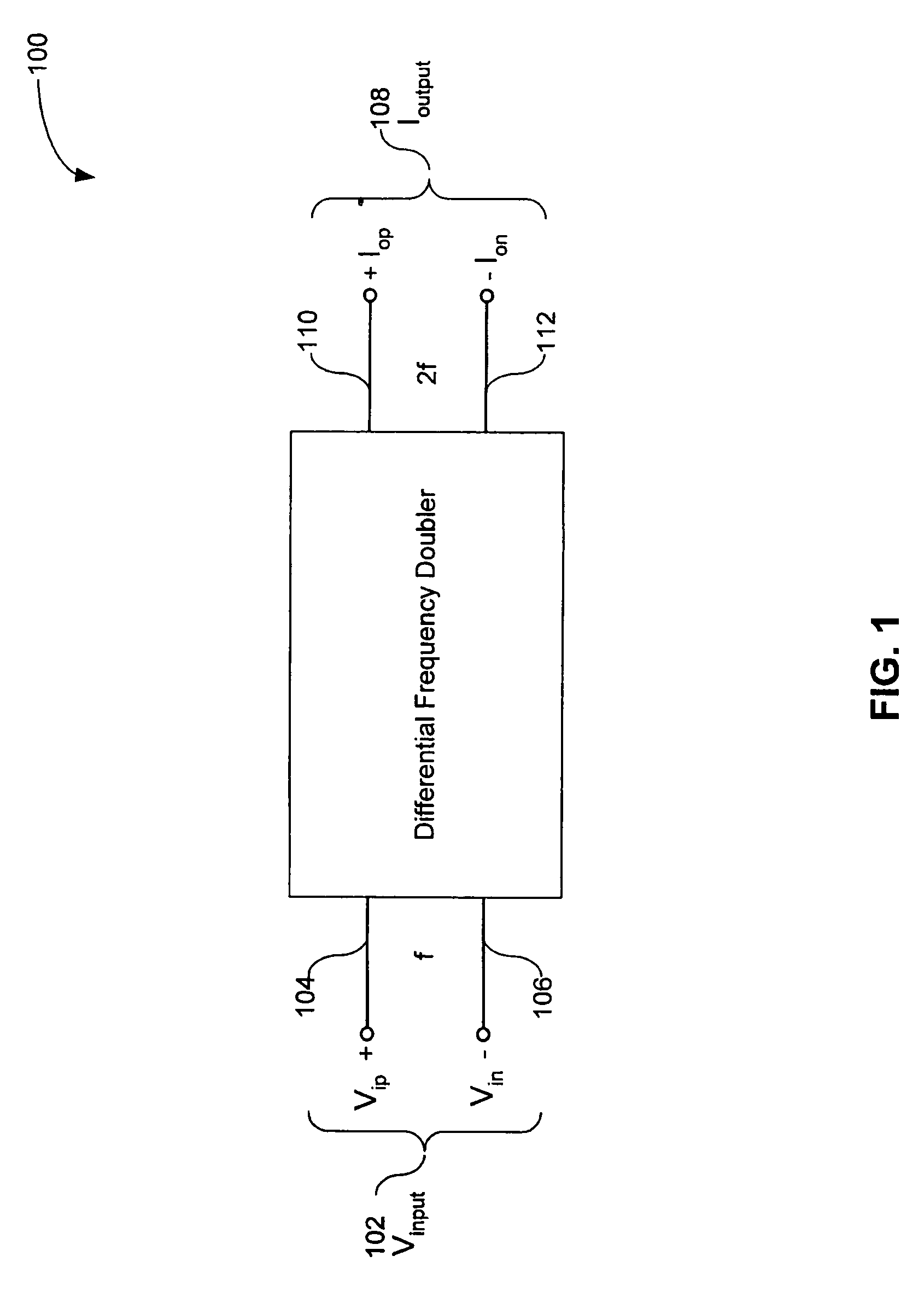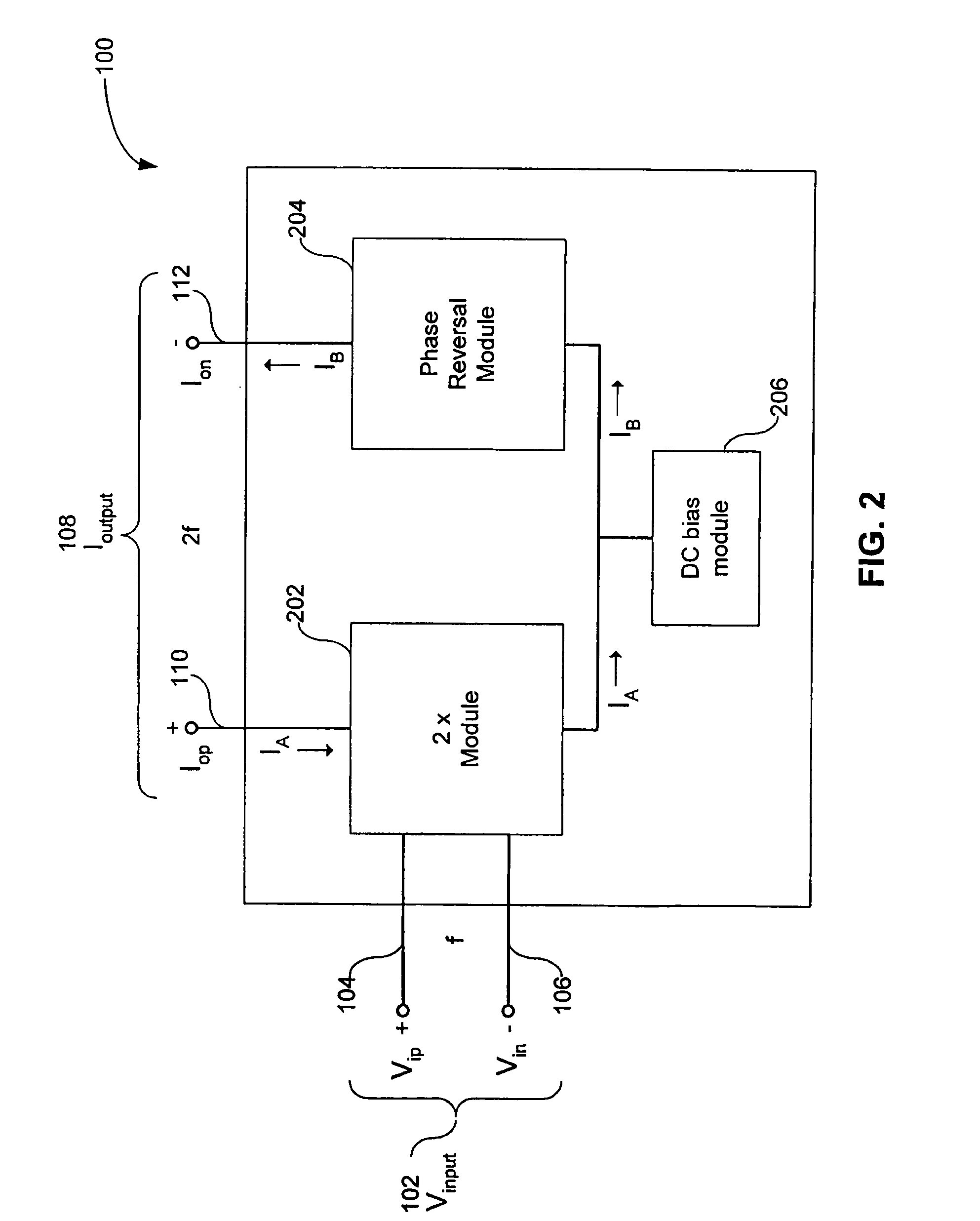Methods and systems for fully differential frequency doubling
a fully differential frequency and frequency doubling technology, applied in the field of frequency doubling, can solve the problems of relatively poor power supply rejection ratio of conventional frequency doublers, and achieve the effect of improving psrr and improving duty ratios
- Summary
- Abstract
- Description
- Claims
- Application Information
AI Technical Summary
Benefits of technology
Problems solved by technology
Method used
Image
Examples
Embodiment Construction
[0020]The present invention is directed to improved methods and systems for frequency doubling. More particularly, the present invention is directed to improved methods and systems for fully differential (i.e., double-ended output) frequency doubling.
[0021]FIG. 1 is a high-level block diagram of a double-ended-output differential frequency doubler (“frequency doubler”) 100 in accordance with the invention. The frequency doubler 100 receives a differential input signal Vinput 102, having a frequency f. Vinput 102 includes a positive non-inverted signal Vip 104 and a negative or inverted signal Vin 106. The frequency doubler 100 outputs a fully differential output signal Ioutput 108, having a frequency 2f. Ioutput 108 includes a positive or non-inverted signal Iop 110 and a negative or inverted signal Ion 112.
[0022]In the example of FIG. 1, the output of frequency doubler 100 (i.e., Ioutput 108) is illustrated as a current output. The current output can be converted into a voltage out...
PUM
 Login to View More
Login to View More Abstract
Description
Claims
Application Information
 Login to View More
Login to View More - R&D
- Intellectual Property
- Life Sciences
- Materials
- Tech Scout
- Unparalleled Data Quality
- Higher Quality Content
- 60% Fewer Hallucinations
Browse by: Latest US Patents, China's latest patents, Technical Efficacy Thesaurus, Application Domain, Technology Topic, Popular Technical Reports.
© 2025 PatSnap. All rights reserved.Legal|Privacy policy|Modern Slavery Act Transparency Statement|Sitemap|About US| Contact US: help@patsnap.com



